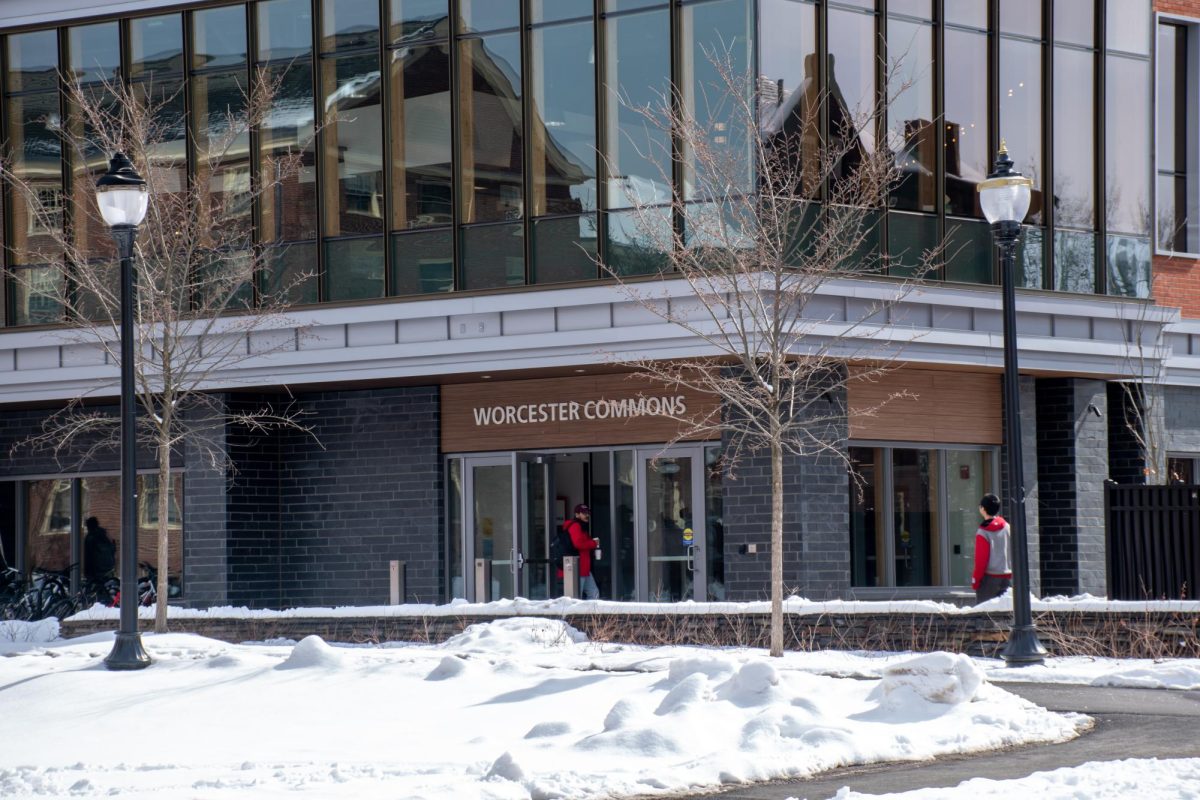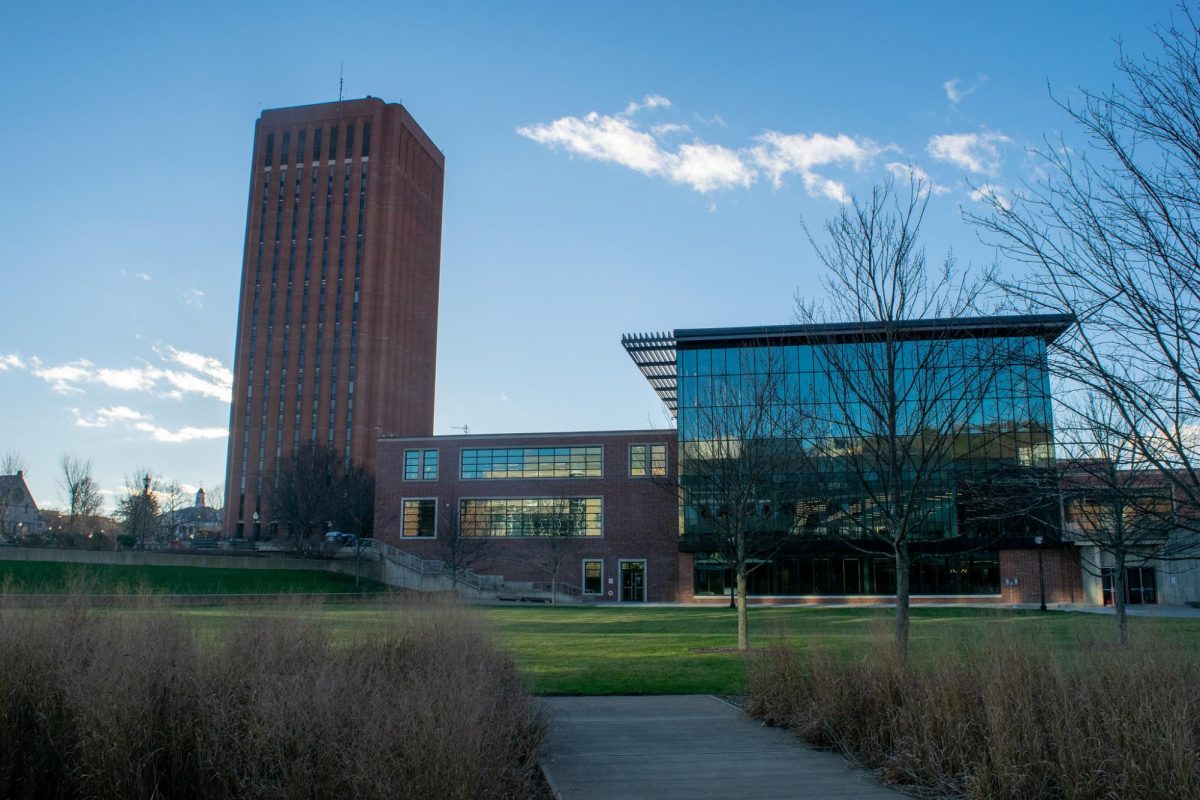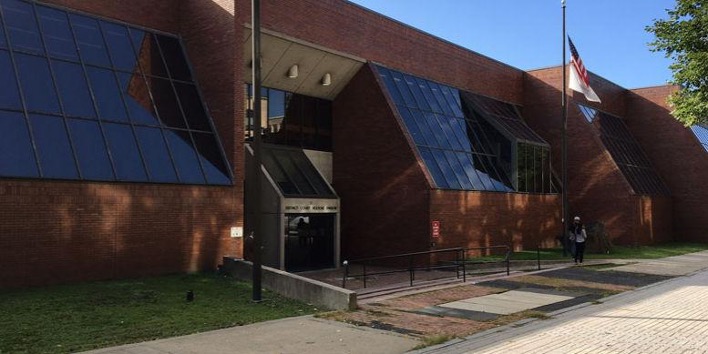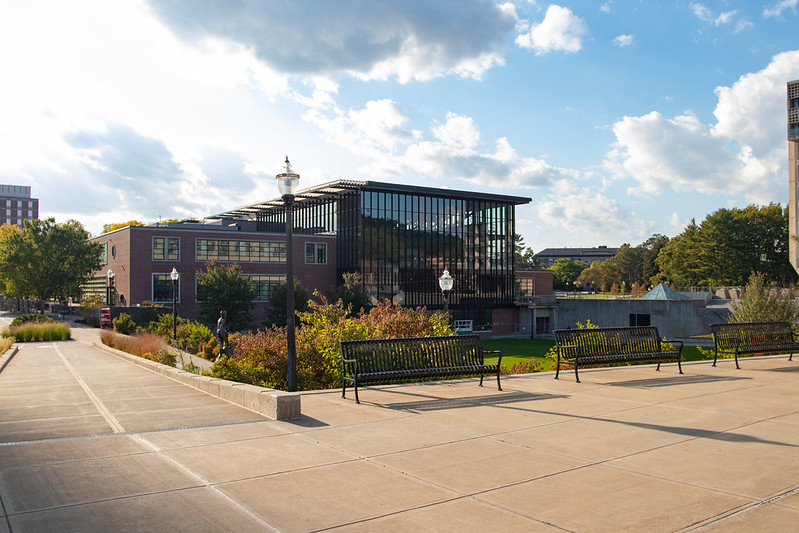On Thursday Sept. 26, the Department of Landscape Architecture and Regional Planning held its weekly Erv Zube Lecture, titled “What is a ‘Third Place’ and Why do They Matter?” in the lecture hall of the John W. Olver Design Building. The lecture was delivered by Karen Christensen, environmentalist and owner of Berkshire Publishing Group.
The lecture was based on the book “The Great Good Place” by sociologist Ray Oldenburg. Originally written in 1989, the book discusses the uses of “third places,” described as meeting places that are neither one’s home or workplace. Christensen, is currently co-authoring the latest version of Oldenburg’s book, “The Great Good Place.”
“The Great Good Place,” which explored Oldenburg’s experience with third places and how they fostered a sense of community in himself, inspired Christensen. Shortly before Oldenburg died in 2022, he and Christensen discussed rewriting the book from a more modern standpoint.
“It was only then that I found out how close I was to the topic [of third places], and how closely it fit with the things that I care most about — certainly, I’ve got a great interest in community, but it ties into transportation,” Christensen said, referencing her work in making railroads more accessible in the Northeastern United States.
Christensen added that racial and gender perspectives encouraged the book to be written through a modern lens, narrating a friend’s account of third places in China and how they fostered camaraderie amongst townspeople there.
Christensen argued that recently, the United States has not always been as effective as it could be in providing people with third places, using Starbucks as an example. She cited how Howard Schultz, who was serving as CEO of Starbucks when Oldenburg’s book was first written, made efforts to mold Starbucks outlets into third places. However, Christensen claimed that since COVID-19, the homely nature of Starbucks outlets has waned, noting though, that Starbucks has been taking steps to evolve the concept of the third place by “creating a virtual third place.”
“… It’s not about going for entertainment; it’s about the people who are there, and looking at people face-to-face and talking, although you don’t have to talk. … Listeners are valuable in a third place,” Christensen said, stressing that such places must be accessible and in close proximity to one’s home and place of work.
She recounted a story of how people congregated in cemeteries in Istanbul, Turkey, during the pandemic, as they were “the only green space” available to people at the time — proof that the pandemic influenced people to reevaluate their third places.
Christensen established that in order to maintain a welcoming atmosphere, third places must be unstructured and available to people whenever needed and must establish all occupants, regular or new, as equals.
Christensen turned her attention to the positive impacts of third places on the physical and political environment, citing how they have generally evolved for the better. “[There has been] reduced consumption in waste; you’re not dependent on things for fun and satisfaction. There’s more activity that doesn’t have to be monetized, and the remote and hybrid work that sometimes goes along with it can energize small communities,” Christensen said.
Christensen also described how third places allowed people with differing political views to discuss their differences without descending into conflict. “We like people more because of … the mere exposure effect. If you are with people more often, you generally tend to like them more … and you find common ground and develop confidence in that diversity,” Christensen said, adding that it was particularly important for young people to integrate themselves into third places and develop their social skills, especially if other people in those third places were of different age groups to them.
Discussing how students could find third places, Christensen said that “the starting point is always to see what exists now. What’s the closest thing? Even if it’s not perfect, even if it’s not working, are there places that … have a good vibe that maybe, with a bit of tweaking … they need a little bit of a sense of privacy.”
Robert Ryan, Professor of Landscape Architecture and Regional Planning and department chair, argued that the quality of third places on campus can be improved through certain steps. “A lot of buildings don’t have seating places near the entrances, and that’s a logical place for a third place because it’s where people come and go into that building,” Ryan said.
Ryan explained that the Design Building created a seating area near its entrance and said that has been beneficial as it allows people to socialize and wait for others conveniently.
Among the students who attended the lecture was freshman Emmet Walsh, who appreciated how the lecture established the connection between buildings and community and cited his local gym as his own third place. “I never knew who was going to be there, but … there would always be someone from my town who would be there, and it was always just nice seeing people,” Walsh said.
Kalana Amarasekara can be reached at [email protected].








